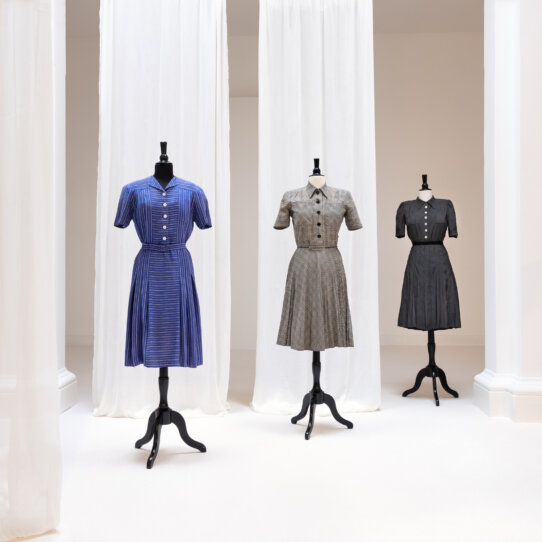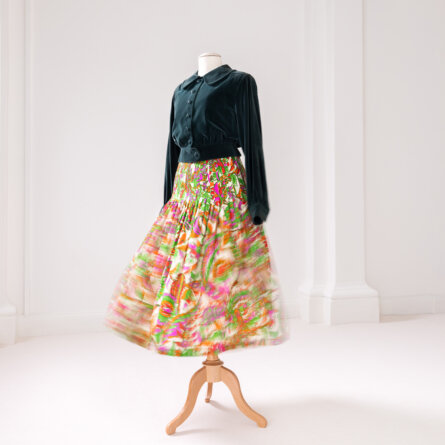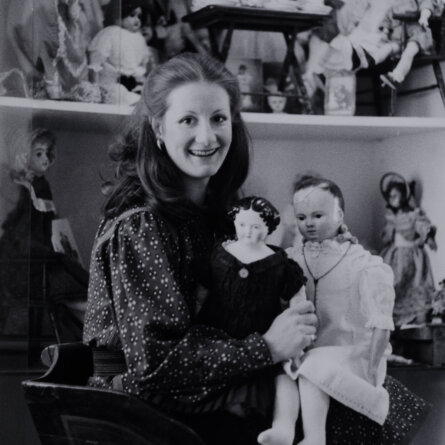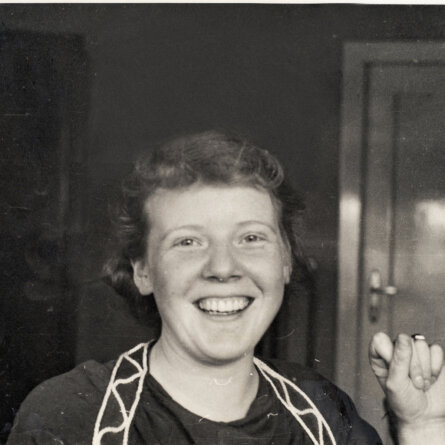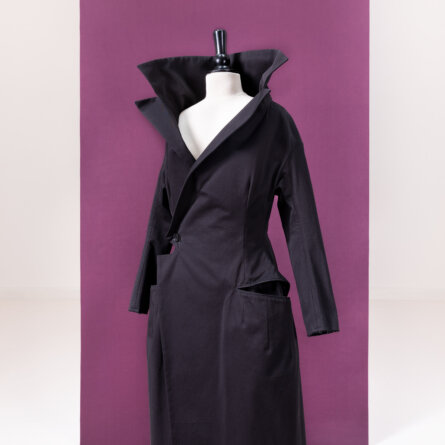Opening Times
Tuesday + Wednesday 10-18 h
Thursday 10-21 h
Friday to Sunday 10-18 h
Address
Museum für Kunst und Gewerbe Hamburg
Steintorplatz
20099 Hamburg-Inner City
. How to get there
Contact
Clothes. Nothing is physically closer to us. Besides its practical function, it is a means of communication, self-expression and self-presentation. Clothing allows us to draw conclusions about social and political constellations. In the 70s, the emancipation movement took off, and women increasingly wore trousers. The tight corset in which women still constricted themselves until the First World War gradually disappeared after women had fought for the right to vote.
The exhibition Dressed. 7 Frauen - 200 Jahre Mode presents seven fashion-conscious women and their wardrobes, from the 19th century up to the present day. The focus lies on the wearers, who are both performers and consumers of fashion, their personalities and their biographies. They tell of wives in high society, of an existence marked by illness, of "power dressing" and self-confidence in the executive suite, of Hamburg's punk scene and the resistant aesthetics of an art and design collector.
The protagonists were not chosen for their status or celebrity but rather to represent the greatest possible variety of female lifestyles and fashionable expressions. The exhibited pieces come from well-known designers as well as anonymous tailors and home seamstresses. The exhibits are complemented by biographical testimonies, photographs and documents of the women portrayed.
The exhibition also shows how much the self-image of the wearers has changed in the 200 years depicted here. In addition, the exhibits say something about their wearers, their social status and their attitude to society. In addition, there is a lot of personal history. In complement to the design of the garments, the how, where and when they were worn makes them unique.
The lives of the women who lived in these clothes are immortalised on and in the fabrics and become visible to the visitors. The exhibits were deliberately chosen so that it remains recognisable how and where personal history has been immortalised on and in the exhibits.
The seven protagonists come from different social classes and other times. As diverse as their backgrounds are, as different are the women's fashion preferences. From haute couture to everyday, protest or avant-garde fashion, the exhibition reflects the women's multi-faceted wardrobes. Their stories are re-enacted with around 150 garments and accessories, demonstrating 200 years of fashion history.
One of the women whose clothes and stories are presented is Elise Fränckel, a senator's wife from Oldenburg born in 1807. She dressed fashionably up to date during the first half of the 19th century and appeared self-confident as a senator's wife in the North German province, at a time when the bourgeoisie was self-confidently conquering fashion and dress norms.
Or Edith von Maltzahn, who, as a diplomat's wife, dressed primarily in elegant day clothes and exquisite evening and formal dresses from 1895 to 1950. In the surviving garments, the progress of life is inscribed just as much as the significant incisions.
As in the case of Erika Holst, whose life was marked by the war years of the Second World War and a severe illness. The material, workmanship and condition of her garments document the strict distinction that was common between everyday clothing for the home, daywear intended for the public and wardrobe for special occasions.
These are joined by the prêt-à-porter clothes of the Hamburg gallery owner Elke Dröscher. For many years, Dröscher wore exclusively Yves Saint Laurent, who, as a couturier, was a pioneer of prêt-à-porter. Saint Laurent transferred the pragmatism of men's clothing, which is practical and prestigious, to his collections for women. Dröscher used fashion to create a particular image of herself that would benefit her professionally and protect her personally.
The clothes of Ines Ortner, who belongs to Hamburg's punk scene, reflect her anti-authoritarian attitude and are made of materials and elements that women use when they don't feel like buying a rag off the rack. Ines Ortner's interest in fashion and her socially critical attitude are combined in self-made dress objects. She rejects conventional clothing and fashion design, aesthetics, production, and materiality and restages them with delight in provocation.
In addition, we see garments by Angelica Blechschmidt, the former editor-in-chief of German Vogue, who loved to wear black cocktail dresses and extra-large jewellery and thus shaped a style. She remained faithful to this style, her personal fashion statement, and is one of the few German-style icons who attracted international attention.
The last of the seven women is the design collector Anne Lühn. Anne Lühn's wardrobe consists of the works of Japanese fashion designers Rei Kawakubo, Yohji Yamamoto and Issey Miyake, as well as the Antwerp School, in particular Martin Margiela. Designers who are considered aesthetic "game-changers". They design for a rejection of body optimisation and offensively displayed sex appeal. At the end of the 20th century, they turned to a more inclusive aesthetic regarding body size and age.
A multi-layered exhibition that tells us about seven personalities, their clothing styles, the times they lived and live in and the ever-changing design of fashion. Go there!
The exhibition at the Museum für Kunst & Gewerbe runs until 28.08.2022.
